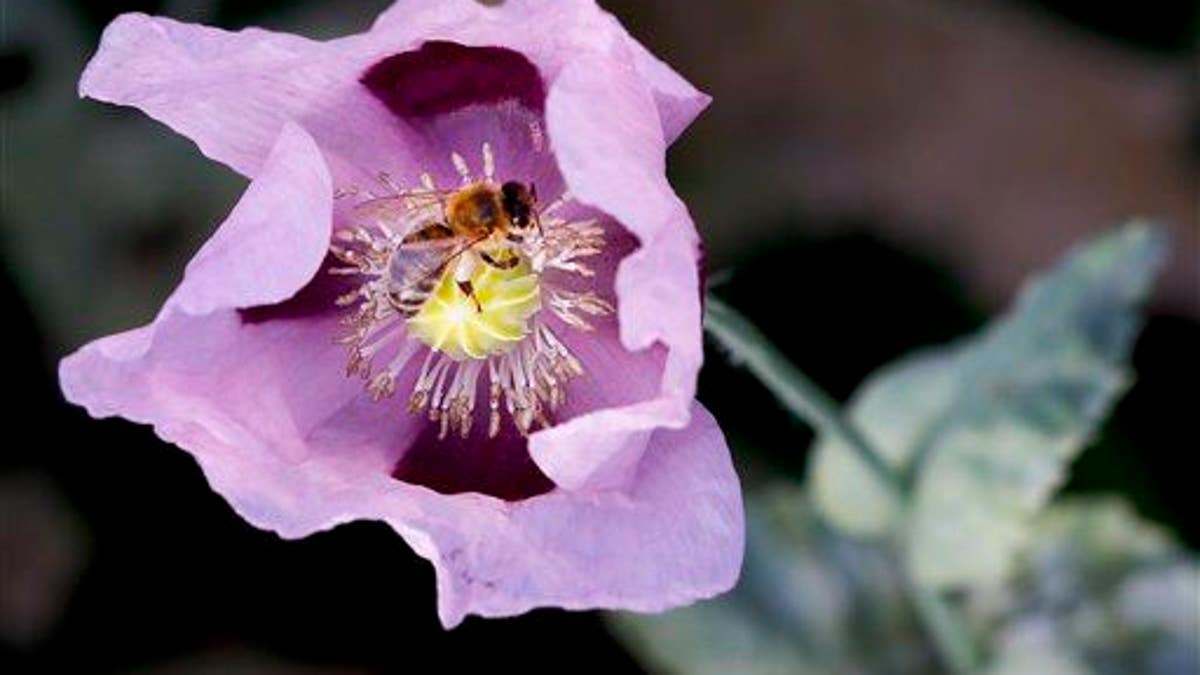
A bee collects pollen from the flower of an opium poppy; the Poison Garden features poppies. (AP Photo/Kirsty Wigglesworth)
When Jane Percy became the Duchess of Northumberland in 1995, she inherited a fancy new title, a castle—the one used as the Hogwarts school in a couple of Harry Potter movies—and acres of disheveled gardens that her husband asked her to tidy up.
Percy's interest in poisonous plants had been piqued after visiting the remains of a medieval Scottish hospital, so she set about creating Alnwick Castle's Poison Garden, labeled by Smithsonian as "the world's most dangerous garden." Percy’s driving motivation for her deadly creation? Kids.
"I thought, 'This is a way to interest children," she says. "What's really interesting is to know how a plant kills you, and how the patient dies, and what you feel like before you die." Behind locked gates adorned with skulls and crossbones and advertising that reads "These Plants Can Kill" lie the estate's toxic specimens: more than 100 fatal flora, including hemlock, poppies, foxglove, and castor oil, from which deadly ricin is derived.
One of Percy's favorite plants: angel's trumpet, "an amazing aphrodisiac before it kills you," she tells Smithsonian. Because of the downright dangerousness of the plants (some of them illegal—cannabis and cocaine are among the varieties the duchess maintains), the garden needs special licensing to grow them, Mother Nature Network reports.
Visitors are banned from touching, tasting, or smelling the plants, though even those warnings aren't failproof: Seven people reportedly fainted over the summer after breathing in fumes while walking through the garden.
(Read what toxic plant may have killed Alexander the Great.)
More From Newser
